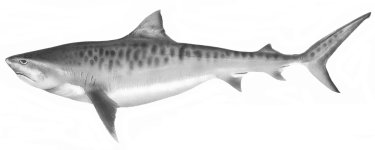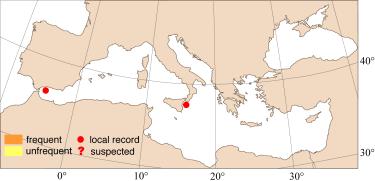
|
Relevant synonyms
Misidentification
|
|
| drawing : Tuvia Kurz |
|
SHORT
DESCRIPTION
color : brown-gray with distinct dark spots and bars on dorsal surface in young specimens. These unique marks fade in adults. Ventral surface light gray to white. size :
adult up to 5.5 m (max. 8 m). |
DISTINGUISHING CHARACTERISTICS
BIOLOGY / ECOLOGY
habitat : inhabits a wide range of habitats, from shallow waters to depths of 150 m. Often enters rivers and estuaries, also swims offshore as a pelagic species. Active during day and night. |
|
1st
MEDITERRANEAN RECORD
|

|
|
DISTRIBUTION
|
ESTABLISHMENT SUCCESS
speculated reasons for success :
|
|
|
MODE OF
INTRODUCTION |
IMPORTANCE TO
HUMANS |
|
KEY
REFERENCES
|